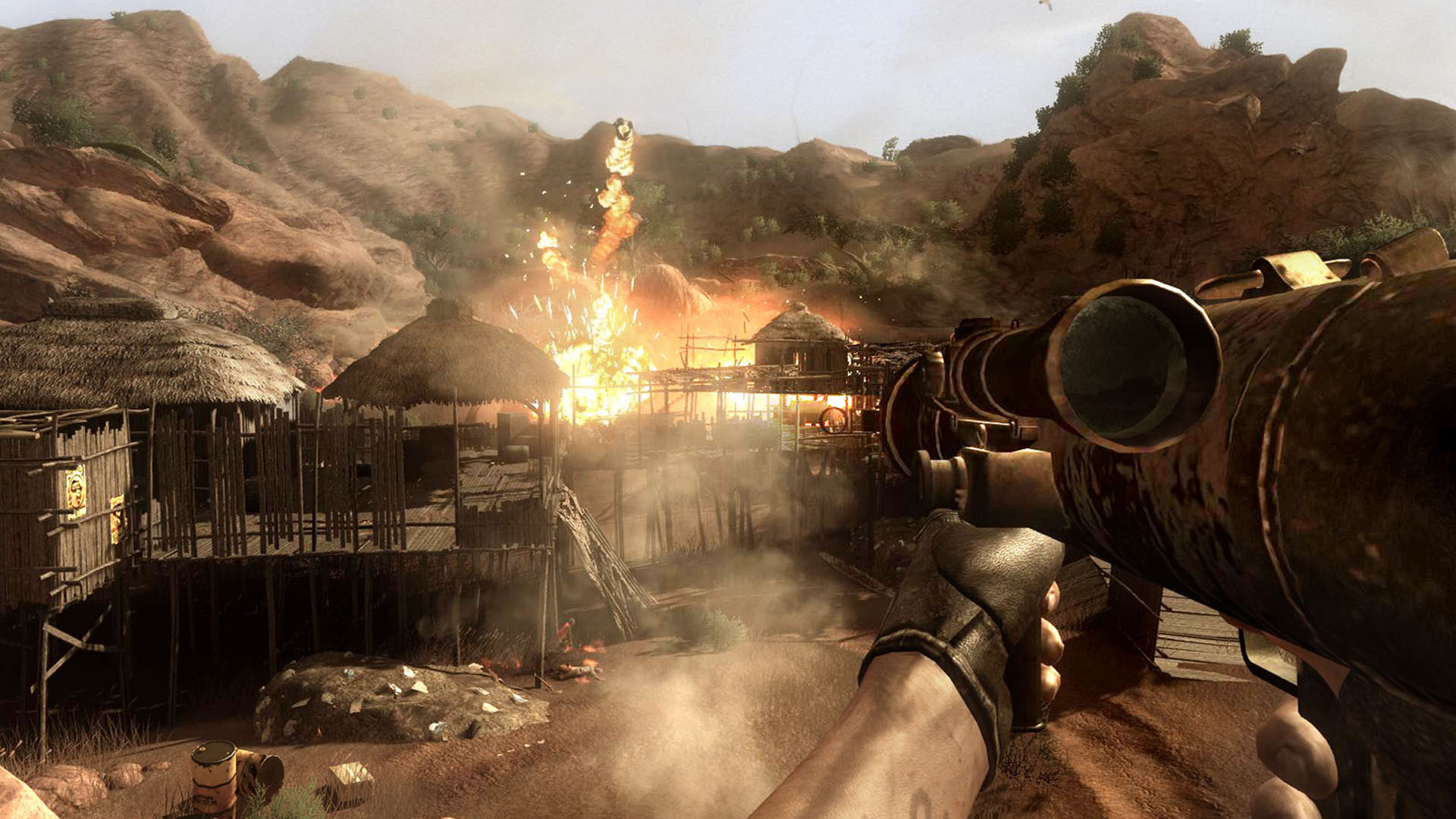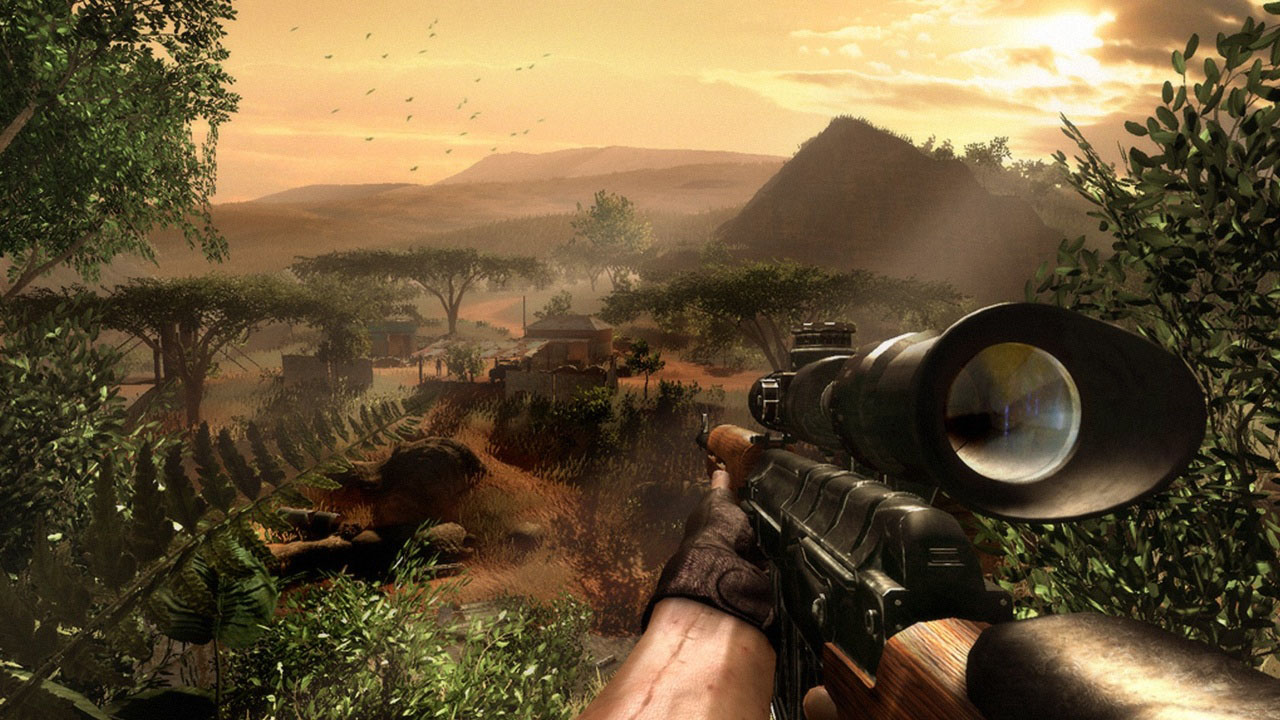Remembering Far Cry 2, the open-world game that wasn't afraid to break the rules
The game that forgot to tell you how good it was

There are some games that explode upon release, have praised heaped upon them by every publication under the sun, and then proceed to disappear from everyone’s memory within six months.
Far Cry 2 was not one of those games. Not because it stuck around, but because nobody really liked it in the first place.
From a hostile world that was a pain to traverse, to its forgettable story, to the fact that your character literally had malaria and would occasionally need to complete side quests to stock up on their life-saving medication, reviewers were flummoxed by a game that simply refused to play by the rules.
A game mis-sold
The problem was made worse by the preview coverage for the game, which consistently over-promised what it would eventually become. In interviews, the game’s creative director Clint Hocking talked about how open-ended the game would be.
He promised that you’d be able to ignore the game’s entire story and make a beeline straight for its principal antagonist, named 'The Jackal', if you wanted to, and that the game would be filled with companions that you’d have to put time into befriending so that they’d choose of their own accord to help you out in missions.
But when the game was released none of these features appeared to be present. You couldn’t get close to The Jackal without playing through literally every story mission, and those companions ended up feeling like little more than a cheap respawn animation.
Initial reviews weren’t terrible, but Far Cry 2 did not initially appear to have reached the heights that it had aspired to.
Sign up for breaking news, reviews, opinion, top tech deals, and more.
The cult-favorite
But over the following months and years Far Cry 2 slowly grew into a cult classic. It became the subject of numerous blogs across the internet, and podcasts endlessly discussed the creative and surprising ways that the game’s missions played out.
So how did this happen?
The problem was that Far Cry 2 was simultaneously ahead of its time, whilst also being completely unable to communicate just how ahead of its time it was.
Far Cry 2 was a game that you could truly approach in whatever way you wanted. You could hang back with a sniper rifle, picking off enemies before sneaking into an encampment and taking down the remainder of the pack.
Or perhaps you could go slightly more gung-ho and crash a vehicle loaded with explosives into a group of baddies, before sprinting from cover to cover with an assault rifle.
Nothing was pre-determined, and everything was possible. The game's world was a sandbox in the best possible way, filled with toys to throw around and secrets to discover.

Far Cry 2 was amazing because of how open-ended literally every single mission was, but the game never went out of its way to explain this to you as you played.
It was perfectly possible to play Far Cry 2 like a generic first-person shooter. You'd run into enemy encampments, gun down everyone in your path, and emerge victorious without realising the numerous other paths that had completely passed you by.
Was the decision not to explain itself properly to its audience a bad decision? Probably, but it meant that when you did happen upon an unannounced feature or tactic, it felt like an achievement, rather than the result of blindly following a breadcrumb trail that someone had meticulously laid out for you.
I still remember fondly straying off the beaten track to discover a hang-glider nestled in amongst some bushes.
Nothing about the game up until that point had ever explained to me that there were hang-gliders hidden around the world to be found to be found. They hadn’t featured in any trailers or posters, and yet here was an entire method of transportation that I’d succeeded in discovering by doing some exploring of my own.
The legacy of Far Cry 2
In the years since Far Cry 2, numerous other games have more explicitly sold themselves on the promise of discovery and open-endedness.
Just this year The Legend of Zelda: Breath of the Wild proved that you could re-inject a sense of wonder into a decade-old series by leaving people to find their own way through its world. Dark Souls, meanwhile, presents you with a large mysterious world, and leaves you to your own devices to find your own way through.
The difference between Far Cry 2 and these more recent games is partly that our expectations have changed, but also that they simply refuse to let you play them in a traditional way, and instead force you into a mindset that suits them best.
Try to play Dark Souls like a generic hack-and-slasher and the game will chew you up and spit you out until you embrace its esoteric way of doing things. Try to play Breath of the Wild like any other Zelda game and you'll be left objective-less after the first hour.
Meanwhile, if you approached Far Cry 2 like a traditional first-person shooter it would reward you with a traditional first-person shooting experience. Nothing offensively bad, but it was a fraction of what the game was capable of. At a time when open-world games were still maturing, Far Cry 2 wasn't prepared to hold your hand through its fiery plains.
Far Cry 2 is one of the most important games ever made, it just took a little bit of time for anyone to realise.
- Check out everything we know about Far Cry 5.

Jon Porter is the ex-Home Technology Writer for TechRadar. He has also previously written for Practical Photoshop, Trusted Reviews, Inside Higher Ed, Al Bawaba, Gizmodo UK, Genetic Literacy Project, Via Satellite, Real Homes and Plant Services Magazine, and you can now find him writing for The Verge.